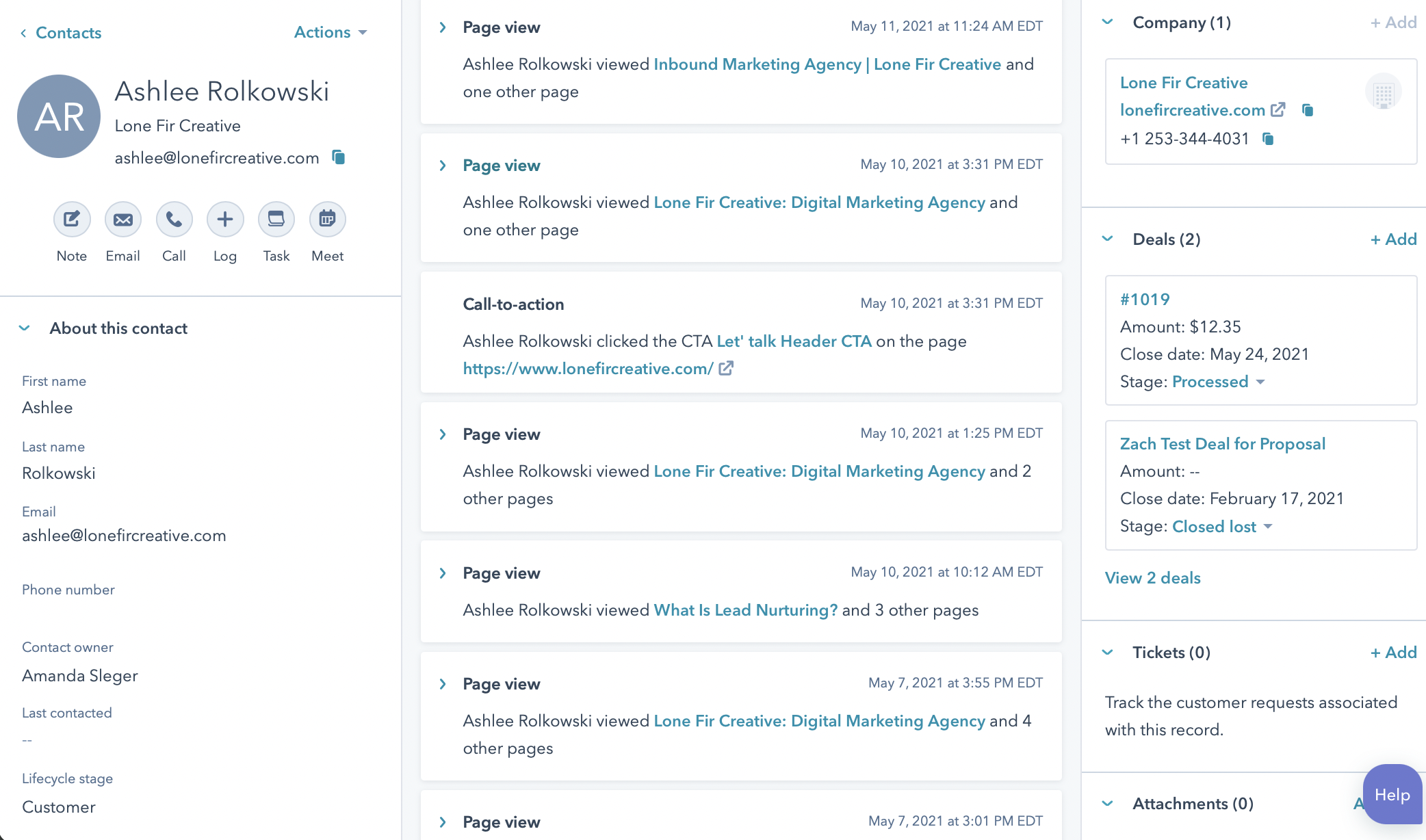There’s a song that starts with the line, “Making money isn’t easy,” and I’m willing to bet almost every salesperson out there resonates with this statement. Even with a stellar sales team, making money can be difficult. You might have had days where you looked at your quarterly numbers and thought, “There’s got to be a better way.”
Well, I have good news for you. There is. It’s no magic bullet or fix-all potion, but improving your sales productivity can go a long way to perking up your bottom line. To really make a difference, however, you’ll need some tools in your toolbox and you’ll need to know how to use them. That’s why we’re here. This article is going to take you through the basics of improving your sales productivity plus the tools and techniques that can help you close more deals.
Increase Sales Productivity to Close More Deals
Before we get into increasing sales productivity, let’s take a crash course on what exactly we mean by that term. Sales productivity is built on a ratio of two things: efficiency and effectiveness. To increase productivity, you want to increase the ratio between the two so you’re using the least amount of input for the maximum output.
Okay, admittedly, that was a little confusing. It’s much simpler than all that mathematical jargon makes it sound.
Efficiency is how much time it takes for you to run your sales process. One of the biggest factors here is spending the most time on leads that are a good fit for your brand and who are most likely to convert to sales. Inefficient sales processes keep you from interacting with a high volume of qualified leads, which translates to fewer closed deals.
Effectiveness is your output — your number of closed deals and the amount they closed for. Once you have a qualified sales lead, what actions are you taking to move them closer to a buy decision? Things like 1:1 video or custom “thank you” emails are two easy ways to personalize the sales process for potential customers.
The most productive sales process balances efficiency and effectiveness by focusing the most effort on the highest quality leads and making processes repeatable wherever possible.
To do that, there are some essential tools your team will need.
Sales CRM
What Your Sales CRM Needs to Do
No matter what type of CRM you’re using, it needs to do a few things to make sure you’re operating at your best. First and foremost, it needs to set the agenda for the day. As soon as you log in, you should have a list of tasks already added to your plate so you know exactly what to do first and what your day will look like. Without an organized system, you’ll be relying on memory. And if your brand is growing and expanding, it’ll be hard to remember all the quality leads you got from prospecting or follow-ups you scheduled with new clients.
To be really effective, though, your entire team needs to be on the same page. You should have a standard process for using the CRM, tracking leads and setting or assigning tasks so it’s uniform across the board. Otherwise, your reporting might not be entirely accurate and your organization can quickly become too messy to make sense of anything. Don’t let sales slip through the cracks because of administrative tasks.
Industry Specific CRMs
Some CRMs are tailored to specific industries so they can offer advanced functionality unique to those spaces. Brands in finance or the health industry, for example, might need extra features to help them better organize their business. A financial adviser could need specific scheduling software or automated emails to update clients about their portfolio performance, while health systems need HIPPA compliant ways to store and organize patient information.
If you work in a niche industry, you might want to consider a CRM that’s been customized for your space. There are plenty to choose from in areas like mortgage, insurance and even construction, so just be sure to explore your options and make sure the CRM you choose offers tools that could be useful to you.
One of the downsides to industry specific CRMs is that they can be slow to implement new technology, difficult to integrate with other programs and oftentimes have limited customization options.
Other Options
For industries with a pretty standard sales process, there are plenty of sales CRMs out there. Some big players are Salesforce and HubSpot. (Our fav is HubSpot *wink wink.)The key to getting the most out of a “standard” CRM is to look for one that’s powerful and customizable.
Powerful means the CRM has enough functions to lighten the load of your sales people. You want to get the most bang for your buck, so streamlining your sales process with automations should be a primary focus. Many CRMs can also track lead activity, such as if a prospect opened your email or what pages they visited on your site.

Customizable means...well, that you can customize it! Being able to make a CRM your own is an easy way to make sure it’s working its hardest for your benefit. Every business is different, so don’t settle for a stringent CRM that locks you into their protocols. To be truly effective and efficient, you want something you can tailor your needs and workflows that’s still easy to use and understand.
Automate. Automate. Automate.
Imagine a little cheerleader in the corner of your CRM constantly encouraging you to automate everything. Okay...maybe not everything, but as close as you can get. Increasing your sales productivity is all about following through with action steps, and what better way to do this than automatically? It ensures you never forget a follow-up, always send timely emails and provides a flawlessly streamlined sales process.
Pre-Written Responses and Video (snippets)
Automation can be a huge help if you’re looking to help your team spend more time selling. Take emails, for instance. It’s exhausting to have to type the same introductory or follow-up email for every potential customer you work with. Let’s be honest, you’re saying the same thing every time. It takes up too much time and puts your salespeople in front of a screen when they could be closing deals. Instead, you can use email templates for common responses or introductory messages, so all your staff has to do is insert the client’s name and hit send.
Another option is to keep a small library of pre-recorded videos that you can send out to qualified leads or interested prospects. These can explain your process, deliverables or any unique features of your contract. It’s an easy way for the person to get to know your brand and how you can help them without either of you spending too much time on it.
You can even create automated tasks to make a personalized follow-up video that explains who you are and how you can help to send to your clients directly. These work great to further a client relationship and add a personal touch to your approach. The videos should be well-thought out and address common questions, so once you are face-to-face with someone, you can hit the ground rolling.
Don’t Let Leads Fall Through the Cracks
Let’s be honest: the sales process can be repetitive. If managing it was the only thing you did all day, then you’d probably be a whiz at keeping everything straight. But the reality is you spend much more time on sales activities like lead generation or outreach. These activities can help you reach your full potential, but if leads are falling through cracks in the system, you’ll never reach your sales goals.
This is where automation can really pay for itself. All those tiny little tasks that are part of your sales cycle—introductory emails, LinkedIn connects, follow-up touches, scheduling meetings—can be automated so that only the most valuable tasks show up on your calendar. How great would it be if you opened your CRM one day and saw you had three meetings with new clients already scheduled and added to your calendar? Automation can do all the tedious leg work so you can put all your effort into closing the sale.
The Gift of Gifts
People Like to Get Things
People like gifts. It makes us feel all warm and fuzzy inside and can be the highlight of our day. Keeping this in mind for your business can help you to relate to customers in a new way. Thoughtful gifts make people feel happy and valued, like they aren’t just another sales lead.
Having customers with butterflies in their stomachs for your brand can actually help to increase your conversion rate. How? The law of reciprocity, my friend. When you give something to someone, they will always want to return the favor and often do by giving you their business. (Whoop, whoop for social protocols!)
It’s also an easy way to set yourself apart from the barrage of other marketing emails and sales calls the client probably fields on a daily basis. And it really works. One time I sent a sheet cake to a prospect that said “Can I take you to lunch?” with my phone number underneath. It worked. Lunch went super and it started off our relationship great!
How to Give Gifts in the Age of Remote
“But it’s 2021, no bakeries near me deliver cake and I don’t have time to drop off presents to every one of our prospects.” I hear you! Believe me, I’m not suggesting sending a sheet cake to every lead. I do suggest, however, that you check out Postal.io. It’s gift-giving for the remote world.
Postal.io lets you send a variety of gifts from handwritten notes to brand SWAG and e-gift cards. It even procures the prospect’s address automatically (and keeps it private), so it’s a little less awkward than you asking for an address so you can send a present. Plus, not everyone has to accept the gifts you send. So if a prospect is uncomfortable or uninterested in your offering, they don’t have to take it and won’t feel pressured to.
📺 We also had a fantastic interview with Lauren from postal.io on "delight" in the sales process. Check it out! 👇
Metrics to Track
“Amateurs hate to be measured, but professionals love to be measured.” - Doug Keime
I heard this quote on a call with Doug a while back and it spoke to my heart! Amateurs are often afraid to look at the numbers because it could point out an area that needs to be improved and it makes them look bad. Professionals love metrics because they could uncover an area they need to improve on and make them even better.
If you want to know all the reasons your conversion rate is what it is, then you need to be looking at a few important productivity metrics. Looking at things like your overall sales performance, number of sales and key performance indicators (KPIs) can give you a holistic view of your sales effectiveness and provide a benchmark to measure future success against.
I know it can be painful to look at areas where you’re underperforming, but it’s the best way to see where you can improve.
Activity (emails, calls, meetings)
The first metric you can explore is your means of messaging. Just like you can’t hit a home run if you don’t step up to the plate, you can’t start people in your sales funnel without reaching out to them. And you can’t try just one tactic either. Life throws fastballs, curve balls and screw balls, so you have to prepare for them all.
The key is to vary your activities within a range of communications. You’ve probably noticed your sales leaders aren’t just sending emails, they’re also making phone calls and setting meetings. Your ideal clients will all have their own preferred way to do business, so your sales team needs to find and match that style.
As we all know, sometimes the more you communicate with someone, the less feedback you get. This is why it’s also important to teach your team when to stop following up. During your sales training or onboarding, teach your sellers how many touches are too many. You don’t want your team spending an inordinate amount of time chasing leads who don’t want to buy when they could be spending energy on ideal customers who are interested.
Close Rate
Do you know your close rate? How about where most of your leads fall off in the sales cycle? You’d be surprised how many teams don’t track their sales data and can’t answer these two questions. Granted, data entry isn’t fun, but having those metrics can help you see where your sales pipeline is breaking down and needs adjustment.
Everyone wants to close deals, and it’s important to know if you are, but it’s also important to remember that your win rate isn’t everything. You also need to know which products your team is closing on and if the clients are a good match for your company. Sales organizations can see real problems when their staff aren’t purposefully closing because those new customers aren’t likely to stay around for long.
It’s also worth mentioning that sometimes close rates can be low because the quality of the leads is poor. Although it looks like a sales issue, this problem could actually have roots in your marketing team. You might need to find a better system for supplying quality leads.
Revenue
You can’t escape it. Your revenue reflects your business, and numbers don’t lie. Whether or not you have the best sales team around, if your average sales aren’t bringing in enough revenue, your business will suffer.
At the end of the day, your sales team is tasked with making sure everyone in the company has a job, so they need to know their goals. It can be helpful to have your sales managers or sales executives forecasting future trends and setting goals for the team to make sure the company hits its marks each quarter.
Tools for Sales Productivity
So far I’ve given you tons of techniques to improve your sales productivity, but I promised you some fancy tools as well. Here’s a quick rundown of some of my favorites:
Vidyard
Think of Vidyard like the new handshake. You can use it to make a powerful first impression and wrap up a sales process with pre-recorded videos. It can also streamline the process and help push deals forward. Writing detailed follow-up emails or meeting to review contract details can suck up a lot of time, but simply recording an explainer video only takes a few minutes.
📺 Check out our interview with Ali from Vidyard for tips on using video in the sales process 👇
Zoom
It seemed like Zoom rose from the ether when pandemic lockdowns started last year, but it’s actually been around since 2011. In case you haven’t been exposed (bad word choice?) to it yet, it’s video conferencing software that makes it easy for people to join a meeting from their respective places in the country or world. Gone are the days of traveling to people’s offices. Just send them a Zoom link!
Postal.io
I explained Postal.io earlier, so I won’t go into detail again. Just remember this platform is for sending a range of gifts to prospects and clients. (You can even send succulents.)
📺 Check out this video on how you can stand out while remote selling with Jon from Postal.io 👇
HubSpot
HubSpot is one of my favorites because it has an incredibly powerful CRM (among other things). It allows for a good bit of customization so you can make the software align with your needs, which, like we talked about, is one of the key requirements of a CRM. You can do things like track leads, manage a contact list and automate emails from the HubSpot CRM. You can also see their activity on your website and in your emails — creepy but effective.
Avoma
Avoma is a call recording software that boasts its ability to provide “actionable
Conversation Intelligence.” It allows you to record calls so you can refer to things you may have missed or don’t remember, but it also uses some AI technology that can transcribe, summarize and even analyze your conversations. So if you rely heavily on detailed phone calls to close deals, this software might be helpful.
Last but certainly not least is tried and true social media. It might seem like a no-brainer, but LinkedIn is an excellent place to network. You can attract potential employees and customers when you post the right kind of content. Try to focus on using live videos and posting your latest blogs or downloadables to low-key engage with prospects and broadcast your brand.
So that’s it! That’s all my sales productivity tools and techniques for you. If you’ve made it through this whole list, then first off, thank you for sticking with me. Second, I hope it was helpful! If you want to talk more about it or need a little help kicking some of these off, feel free to reach out to us. We love talking about anything sales and marketing and would be happy to help you hit those goals you’ve been chasing.






